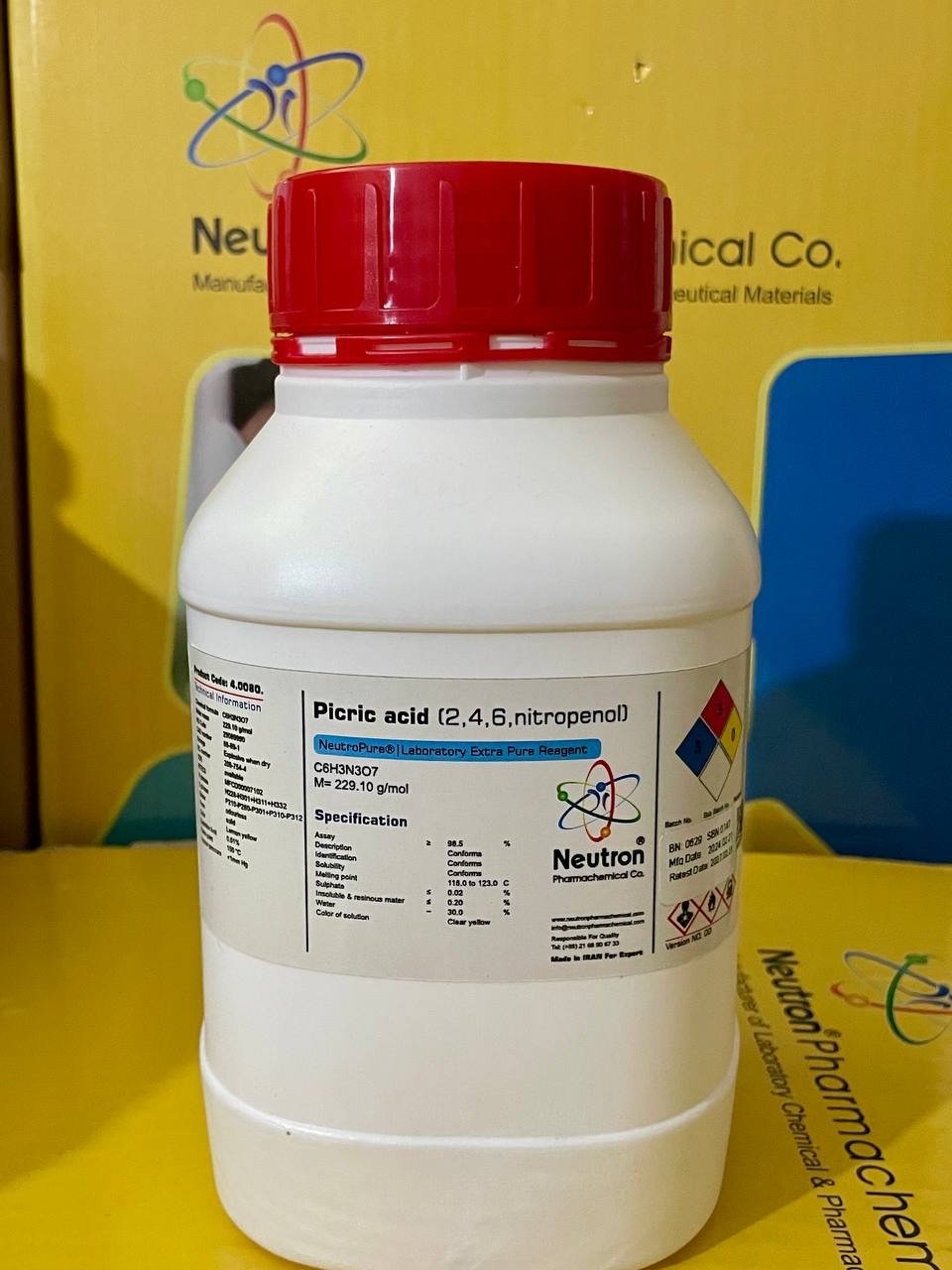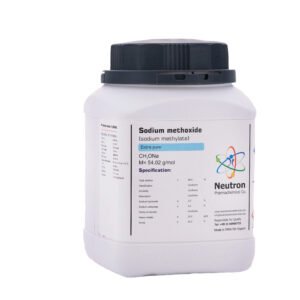picric acid
| Chemical formula | C6H3N3O7 |
| Molar mass | 229.10 g/mol |
| HS Code | 29089990 |
| CAS number | 88-89-1 |
| Storage | Explosive when dry |
| EC number | 208-754-4 |
| SDS | available |
| RTECS | MFCD00007102 |
| R phrase | H228-H301+H311+H332 |
| S phrase | P210-P280-P301+P310-P312 |
| Odour | odourless |
| Form | solid |
| Color | Lemon yellow |
| Explotion limit | 0.01% |
| Flahs point | 150 °C |
| Vapour pressure | <1mm Hg |
| Assay | ≥ | 98.5 | % |
| Description | Conforms | ||
| Identification | Conforms | ||
| Solubility | Conforms | ||
| Melting point | 118.0 to 123.0 | C | |
| Sulphate | ≤ | 0.02 | % |
| Insoluble & resinous mater | ≤ | 0.2 | % |
| Water | ~ | 30 | % |
| Color of solution | Clear yellow |
Picric acid is a bright yellow crystalline solid known for its explosive properties and use as a dye and antiseptic.
🏭⚗️ Production
Picric acid is produced by nitration of phenol using a mixture of nitric and sulfuric acids. This highly exothermic reaction requires careful temperature control to obtain pure picric acid crystals.
🔬 Properties
Picric acid appears as bright yellow, needle-like crystals with a chemical formula C₆H₂(NO₂)₃OH and a molar mass of approximately 229.10 g/mol. It has a melting point of about 122°C and is sparingly soluble in water but soluble in alcohol and ether. It is highly acidic and explosive when dry.
🧪 Applications
Picric acid is used as an explosive, particularly in military and demolition applications. It also serves as a reagent in chemical laboratories for protein and alkaloid detection and as a dye in textiles and histology.
⚠️ Safety
Picric acid is highly explosive, especially when dry or contaminated with metals. It is toxic and can cause burns upon contact with skin or eyes. Inhalation of dust may irritate respiratory pathways. It should be handled with extreme caution, stored wet or in solution, and kept away from impact, heat, and incompatible materials.





